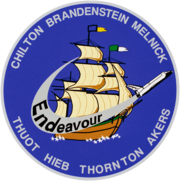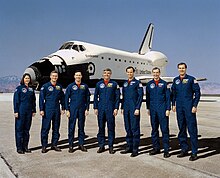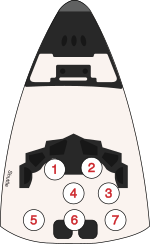 | |
| Names | Space Transportation System-49 |
|---|---|
| Mission type | Intelsat 603 satellite repair |
| Operator | NASA |
| COSPAR ID | 1992-026A |
| SATCAT no. | 21963 |
| Mission duration | 8 days, 21 hours, 17 minutes, 39 seconds |
| Distance travelled | 5,948,166 km (3,696,019 mi) |
| Orbits completed | 141 |
| Spacecraft properties | |
| Spacecraft | Space Shuttle Endeavour |
| Launch mass | 116,390 kg (256,600 lb) [1] |
| Landing mass | 91,279 kg (201,236 lb) |
| Payload mass | 16,984 kg (37,443 lb) [2] |
| Crew | |
| Crew size | 7 |
| Members | |
| EVAs | 4 |
| EVA duration |
|
| Start of mission | |
| Launch date | May 7, 1992, 23:40:00 UTC (7:40 pm EDT) |
| Launch site | Kennedy, LC-39B |
| Contractor | Rockwell International |
| End of mission | |
| Landing date | May 16, 1992, 20:57:39 UTC (1:57:39 pm PDT) [3] |
| Landing site | Edwards, Runway 22 |
| Orbital parameters | |
| Reference system | Geocentric orbit |
| Regime | Low Earth orbit |
| Perigee altitude | 268 km (167 mi) |
| Apogee altitude | 341 km (212 mi) |
| Inclination | 28.32° |
| Period | 90.60 minutes |
| Instruments | |
| |
 STS-49 mission patch  From left: Thornton, Melnick, Thuot, Brandenstein, Chilton, Akers and Hieb | |
STS-49 was NASA's maiden flight of the Space Shuttle Endeavour, which launched on May 7, 1992. The primary goal of its nine-day mission was to retrieve an Intelsat VI satellite, Intelsat 603, which failed to leave Low Earth orbit two years before, attach it to a new upper stage, and relaunch it to its intended geosynchronous orbit. After several attempts, the capture was completed with the only three-person extravehicular activity (EVA) in space flight history. [4] It would also stand until STS-102 in 2001 as the longest EVA ever undertaken.




